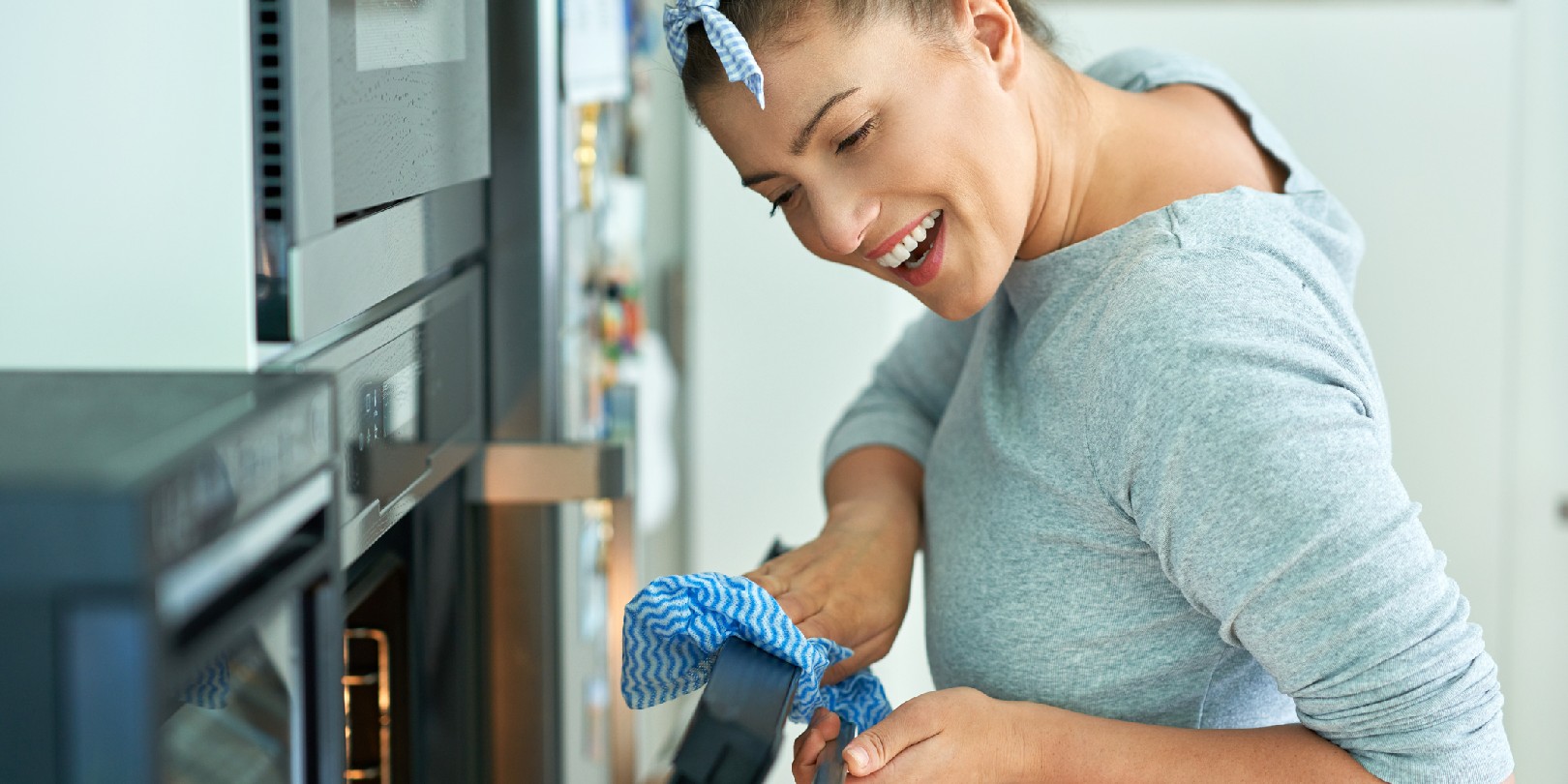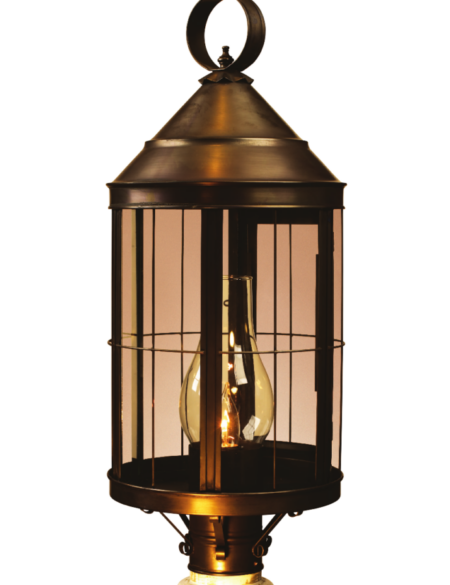This content was originally published on OldHouseOnline.com and has been republished here as part of a merger between our two businesses. All copy is presented here as it originally appeared there.

If you’ve ever opened your oven door after cooking something and been met with a nasty smell, you know how important it is to clean your oven. Not only does it leave your kitchen smelling fresh, but it also ensures your food is cooked properly and without any unwanted tastes from lingering grime.
In this guide, we’ll explain everything you need to know about cleaning an oven, from racks to coils. So whether you’re looking for tips on how to get the tough burnt-on stains off the walls or just want to know the best way to deep clean your oven, we’ve got you covered. So grab your rubber gloves and tackle that oven; you’ll never want to return to takeout again!
What Is an Oven?
An oven is a self-contained cooking appliance that uses heat to cook food. Ovens were first developed in the 1700s and are constructed with brick, clay, and metal. Nowadays, ovens are typically made with metal and other heat-resistant materials, and they come with temperature settings and temperature control systems. The main components of an oven are the wiring, heating elements, door handles, door frames, oven igniters, and insulation.
Cleaning an Oven: Plan of Attack
Before cleaning, it’s important to check all warning labels on the appliance for any cleaning-related warnings. Once all warning signs have been taken into consideration, there are two major steps when cleaning an oven: cleaning the racks and the coils.
The most common type of rack found in modern ovens is the wire rack, which can easily be removed for cleaning. Steel racks should also be taken out to give them a thorough scrubbing. Grease and food buildup may be present on both types of racks.
Ovens feature heating coils near the base or around the sides of the interior walls. These coils provide heat throughout the oven’s interior chamber and the stovetop burners on gas ranges. However, grease buildup can occur on these coils over time if they are improperly cleaned.
Cleaning Racks
After deciding what type of rack is in your oven and taking it out, it’s time for the cleaning process. It’s important to remove any shelves or racks if you plan on cleaning your oven’s walls or need access to clean harder-to-reach areas of your oven’s interior chamber. Wire racks can simply be pulled out by hand directly from their grooves effortlessly; steel racks may require prying to remove them from their slots within the interior walls of the oven chamber.
Once the racks have been removed from the oven, they should be soaked in warm, soapy water with a dish soap solution for at least 30 minutes to loosen any grease and food buildup that may have accumulated on their surfaces over time. After soaking, use a scraper tool or soft sponge to remove any remaining residue from each rack’s surface area before rinsing them off with warm water and setting them aside for further drying activities after completing other necessary cleaning steps for your oven’s interior chamber(s).
If your racks are covered in tough grime or stubborn residue that can’t be removed through hand scrubbing or soaking, you may want to try more powerful cleaning agents such as white vinegar or baking soda mixed with water. These solutions can help break down any remaining build-up on the surface of the racks. After using these cleaners, rinse the racks with warm water once again, as mentioned earlier. It’s important to avoid using harsh chemicals whenever possible and instead opt for safer alternatives like natural detergents such as Castile soap or olive oil.
Cleaning Coils
To clean your oven’s heating elements, you need to first locate them. Most modern ovens have heating elements near the sides or at the base, sometimes both. Electric models may also have fan grills or covers. Look for wire coils or grids alongside the countertop or cabinet surface or recessed within the wall structure to find the heating elements. Traditional gas ranges have two sets of coils, one near the top/middle with grate covers and another set closer to the bottom of the oven chamber. In addition, electric models may have an internal fan at the base, which should be left uncovered to improve air circulation and prevent dirt buildup on the coils.
Once you have identified all the necessary components in your oven’s interior, vacuum all areas with dirt or debris. Vacuuming is important if your model features fan grates or vents to prevent problems during normal use. A handheld vacuum cleaner attachment can make the job easier and avoid damage to delicate fan blades or wiring under the covers. To access hard-to-reach areas, you can briefly open the oven door but avoid leaving it open too long due to radiation hazards.
After vacuuming, brush away any remaining loose particles before applying a bleach and water solution (around 70% bleach) to the heating components mentioned earlier. Be careful not to get anything else wet during this step. Oven igniters may require special attention to avoid accidental damage, but only light brushing is usually necessary. If heavy-duty cleaning is required against ignition sources in many traditional gas ranges, specialized chemical substances may be necessary alongside protective gloves. Proceed safely and keep this in mind before proceeding further.
Finishing Up
After cleaning all the necessary components of your oven, it’s time to put everything back together. Firstly, to reinstall the racks, ensure all the dirty surfaces have been wiped down and/or scrubbed clear. Next, place each rack back into its respective slot inside the stove walls, ensuring everything lines up properly and fits securely before moving on to the next stage. Steel racks may require additional prying efforts to get them back into their correct positions. Finally, tighten the screws back onto the racks once fully secured.
Secondly, wipe down the entire inside chamber walls one last time with a damp cloth to eliminate any remaining unwanted residues left behind. Doing so will help prevent future greasy messes from recurring. Lastly, before turning the oven on and restoring power, let it heat up underneath. However, before doing so, it would be wise to let the oven cool down completely to prevent potential fires from breaking out unexpectedly, even after all the work is done. Once the oven is cool and safe, plug it back in and enjoy your freshly cleaned stove.
Maintenance Tips
Regular cleaning and maintenance are crucial to maintaining the best performance of your oven and prolonging its life span. In addition to removing the racks and washing them regularly, there are several other things to consider to keep your oven pristine.
Firstly, make it a habit to wipe down the inside of the oven chamber at least once a week to prevent dirt and stains from accumulating. This will help prevent long-term buildup and keep your oven looking clean.
A pan lined with foil at the bottom of the oven catches dripping grease. Certain models have designed this into their products to prevent drippings from sticking and burning onto the inside walls. You can sprinkle baking soda in areas that risk catching greasy substances on the outside chambers. This will keep the oven tidy and easy to clean.
It’s also important to avoid overheating the oven, as this can cause unnecessary wear and tear on the wiring and other parts over a prolonged period. Maintaining temperatures at a maximum of 250°F to avoid such issues and protect the circuits built to withstand prolonged exposure to high temperatures is recommended.
When cleaning your oven, it’s best to avoid using strong acids, bases, hydrocarbon solvents, or corrosive agents that might alter the various components of the oven, such as metals and plastics. Regular detergents are safe and effective for cleaning.
Conclusion
Cleaning an oven is necessary to ensure it continues to function properly. With the tips in this guide, you can easily clean your oven from racks to coils and get it back to working like new. Not only will it help your food cook better, but it will also help keep your kitchen smelling fresh. So the next time you cook a delicious meal, don’t forget to give your oven a quick clean-it’s the best way to ensure your food tastes its best every time.








